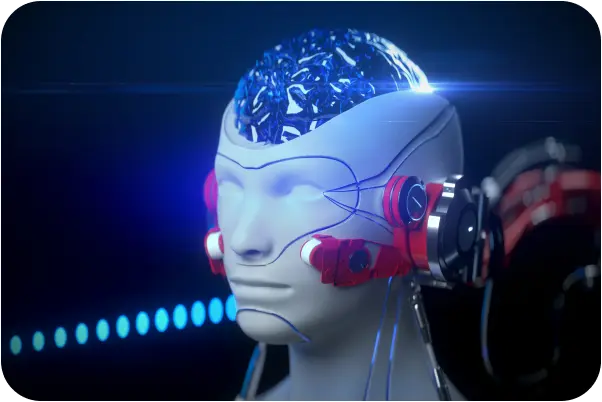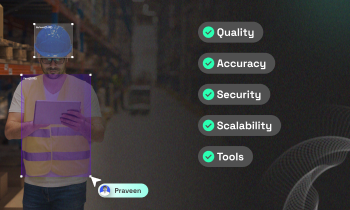Can dictation data support named-entity recognition models?
Named-Entity Recognition
Data Analysis
AI Models
Yes, dictation data can significantly enhance named-entity recognition (NER) models, especially in specialized fields like healthcare. This distinct data type provides a structured, terminology-dense resource ideal for training NER systems to identify critical medical entities such as medications, diagnoses, and procedures. By leveraging dictation data, healthcare organizations can streamline clinical workflows, improve electronic health record (EHR) automation, and ultimately enhance patient outcomes.
How Dictation Data Enhances Medical Named-Entity Recognition
- What is Dictation Data? Dictation data involves audio recordings where clinicians verbally document patient encounters in a monologue style. This structured format contrasts with conversational speech, focusing on specific clinical sections such as demographics, medical history, and treatment plans. The rich, precise terminology inherent in dictation data makes it an invaluable asset for training NER models, allowing for more accurate identification and categorization of medical entities.
- Why This Matters? Improved NER performance directly translates to better patient care and operational efficiencies. By accurately extracting entities like drugs, symptoms, and procedures, healthcare systems can:
- Enhance clinical decision support with timely, relevant data.
- Automate EHR updates, reducing administrative burden.
- Minimize errors in medical records, leading to improved patient safety.
Integrating Dictation Data into NER Models: Key Steps
- Data Collection: Gather high-quality dictation recordings from clinicians, ensuring they capture the nuances of clinical language while adhering to privacy standards.
- Transcription and Annotation: Transcribe the audio and annotate the text to highlight relevant medical terms. This involves tagging entities such as drug names, symptoms, and procedures, which form the backbone of NER model training.
- Model Training: Use the annotated data to train NER models, leveraging the structured nature of dictation data for effective learning. This process benefits from the rich metadata associated with each recording, such as the clinician's specialty and recording environment.
- Validation and Refinement: Continuously evaluate and refine the model's performance using fresh dictation data. This iterative process ensures the model adapts to changes in clinical language and emerging medical terminology.
Key Decisions for Successful NER Model Training with Dictation Data
- Data Diversity: Include samples from diverse clinical specialties and various accents to improve model generalizability across different patient populations.
- Annotation Depth: Balance the need for detailed annotations with resource constraints, as more granular annotations provide richer data but require more time and effort.
- Quality Assurance: Implement a robust QA process, including automated checks and human review, to maintain high transcription and annotation standards. This step is crucial for ensuring the accuracy and reliability of the NER model.
Avoidable Pitfalls in NER Implementation with Dictation Data
- Relying on Scripted Dictation: Over-reliance on scripted recordings can lead to models that underperform in real-world scenarios. Prioritize spontaneous, clinician-generated audio to capture authentic variability.
- Ignoring Contextual Relevance: Failing to consider the clinical context can result in poor entity recognition. For example, understanding the implications of terms like "stable" in different contexts is essential for accurate model training.
- Neglecting Continuous Updates: Regularly update models with new dictation data to keep pace with evolving medical terminology. This practice ensures the model remains up-to-date and accurate.
Conclusion
By effectively utilizing dictation data, healthcare organizations can significantly enhance NER models, leading to more efficient clinical data extraction and better patient outcomes. Understanding and addressing the nuances of dictation data, from collection to model training, will enable teams to fully realize its potential.
For healthcare projects requiring robust NER capabilities, FutureBeeAI offers comprehensive dictation datasets that can be customized to meet various clinical needs. Our platform delivers production-ready data within 2-4 weeks, ensuring compliance and high-quality standards.
Smart FAQs
Q: How does dictation data differ from regular conversational speech in NER applications?
A: Dictation data is structured and terminology-rich, focusing on clinical documentation, whereas conversational speech involves natural dialogue with less predictable language patterns. This structure allows NER models trained on dictation data to achieve higher accuracy in identifying relevant entities.
Q: What role does quality assurance play in utilizing dictation data for NER?
A: Quality assurance is critical to ensure the accuracy of transcriptions and annotations. A robust QA process involving automated checks and human review helps maintain high-quality standards, ultimately leading to more effective NER models.
What Else Do People Ask?
Related AI Articles
Browse Matching Datasets
Acquiring high-quality AI datasets has never been easier!!!
Get in touch with our AI data expert now!








